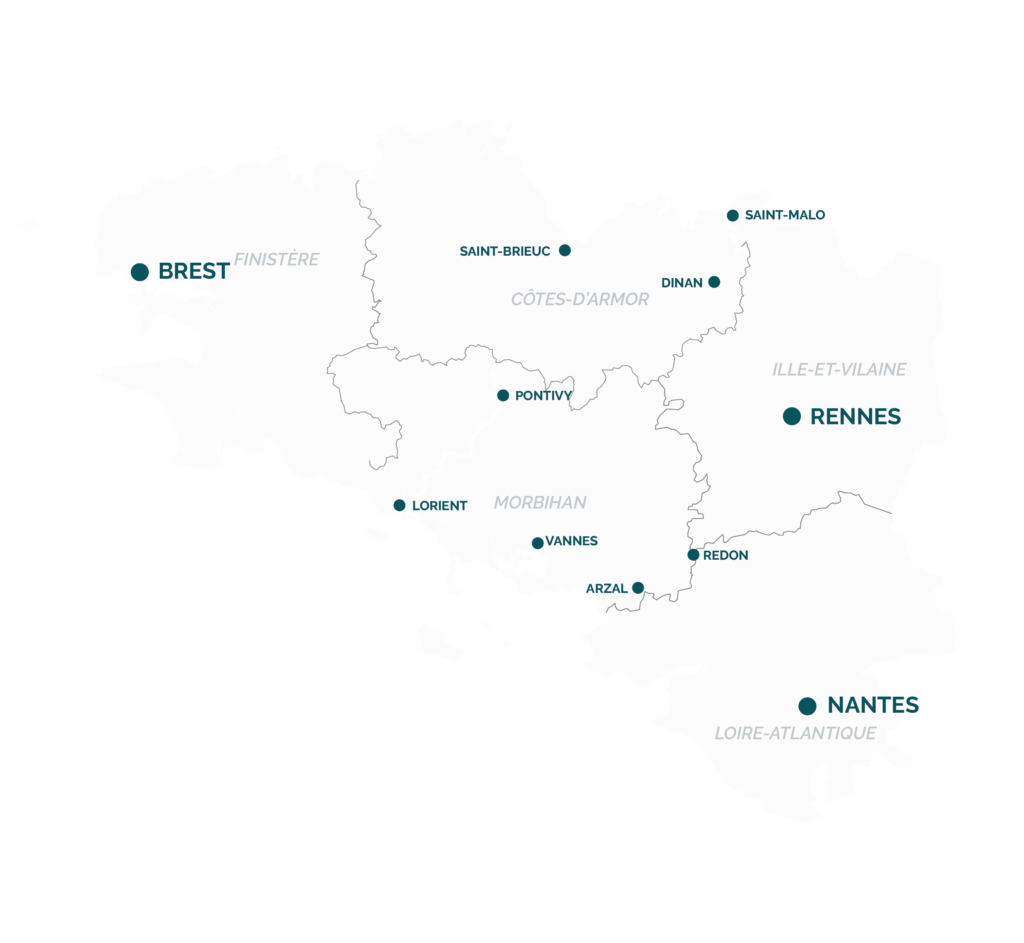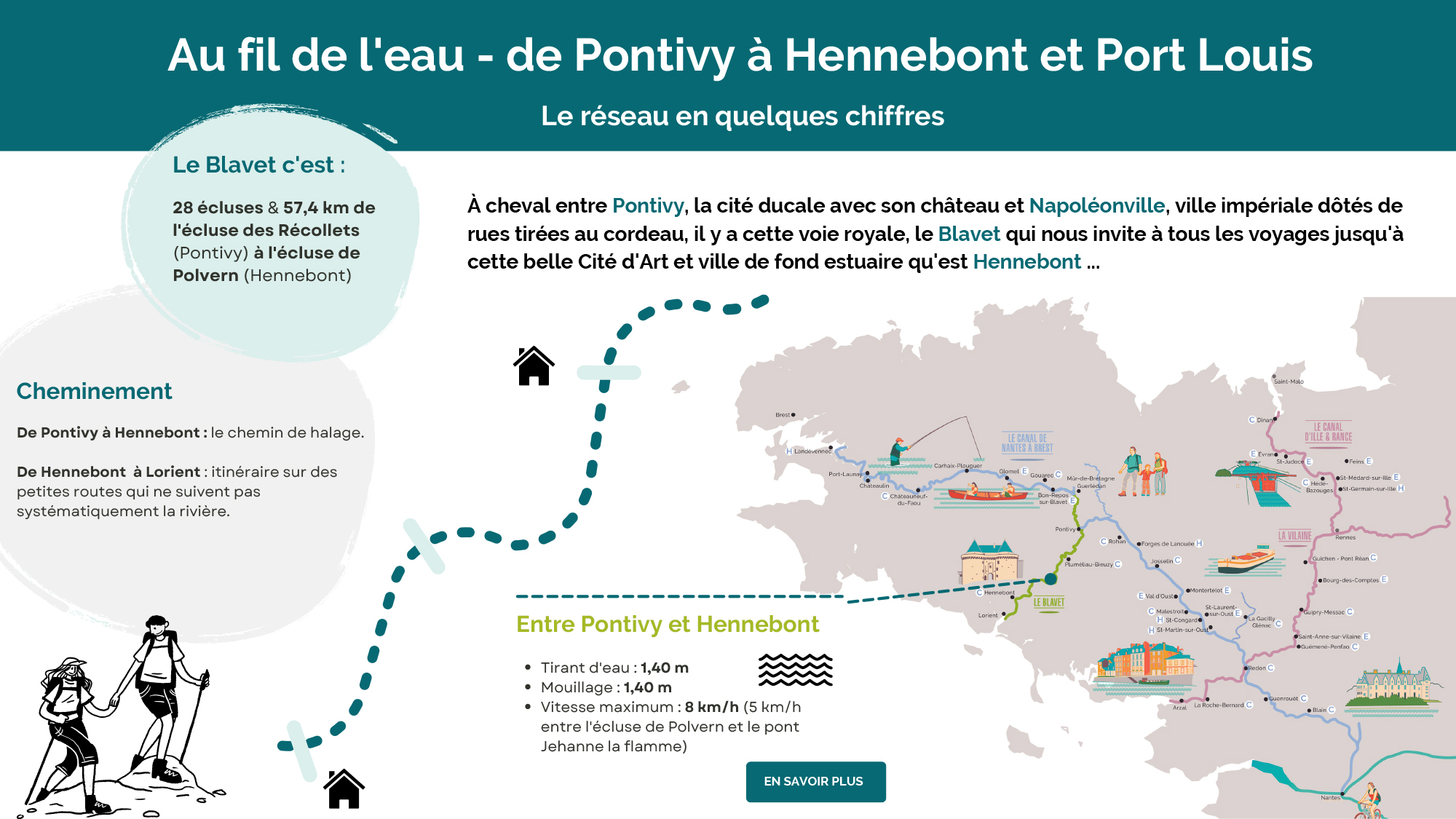Le Blavet

LE BLAVET
From medieval Pontivy, the ducal city with its fortress and narrow streets, the Blavet runs south to the 19th c imperial city, once dubbed Napoleonville, eventually reaching the estuary town of Hennebont, city of art and culture...
THE ROUTE
28 locks I 57.4 km from Récollets lock in Pontivy to Polvern lock at Hennebont Itinerary The towpath runs from Pontivy to Hennebont from where it uses minor roads that don’t always follow the course of the river to Lorient
BETWEEN PONTIVY AND HENNEBONT
17 LOCKS I 88,40 km Draught : 1,40m Anchorage : 1,60m Maximum speed : 8kph (5 kph between Polvern lock and the Jehanne la Flamme bridge)
A little history
The Blavet rises in the Côtes d'Armor and flows south through Pontivy and Hennebont to reach the Atlantic Ocean at Lorient. The canal’s history dates back to 1785 when the Inland Navigation Commission established by the regional government ordered the authorities in Pontivy to assess the possibility of navigation on the "Blavette". A grant of 600FF was made available to Sieur Chardon who undertook the project. He and three associates sailed down the river to survey it. It took them four days to complete the journey and cross the river’s numerous fisheries and millponds.
A strategic imperative
As with the Nantes to Brest canal, construction was linked to the resumption of hostilities with England. The strategic objective was to create an inland waterway to link Pontivy to the Bay of Biscay, passing through the arsenal port of Lorient. Its creation coincided with the "Chouannerie", the counter-revolutionary movement that led to a troubled period in Breton history. Nonetheless the work was completed and it became a vital part of the waterways network.
A titanic project
Following various studies and his first field visit in 1802, the engineer Bouesse proposed the construction of 27 locks and lockkeeper’s cottages, and 360 bridges and culverts. More than 500 navvies from Ploërmel were recruited to remove rocks blocking the river and to build the embankments. 200 others, who had previously worked on the fortifications at St. Malo, were employed to "smash, split and cut stone". Nearly 1,500 convicted deserters who "were clogging up" the prison at Hennebont were drafted in to work as forced labour in slave-like conditions. Some twenty construction sites for 72 deserters each and 56 cabins "painted with two coats of olive green paint" were set up along the length of the Blavet. Conditions were appalling. The project was marred by illness, epidemics, accidents, drownings, periodic escapes and even bankruptcies.
Finished at last!
The work was finally completed under the reign of Charles X on 4th November 1825. The Blavet Canal was inaugurated with great pomp when the boat "Marie-Thérèse" arrived in Pontivy to the applause of the population...


